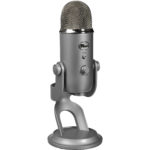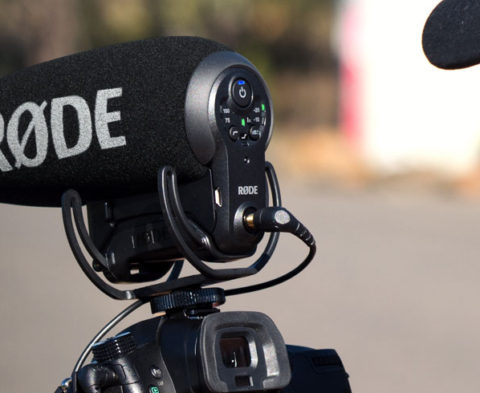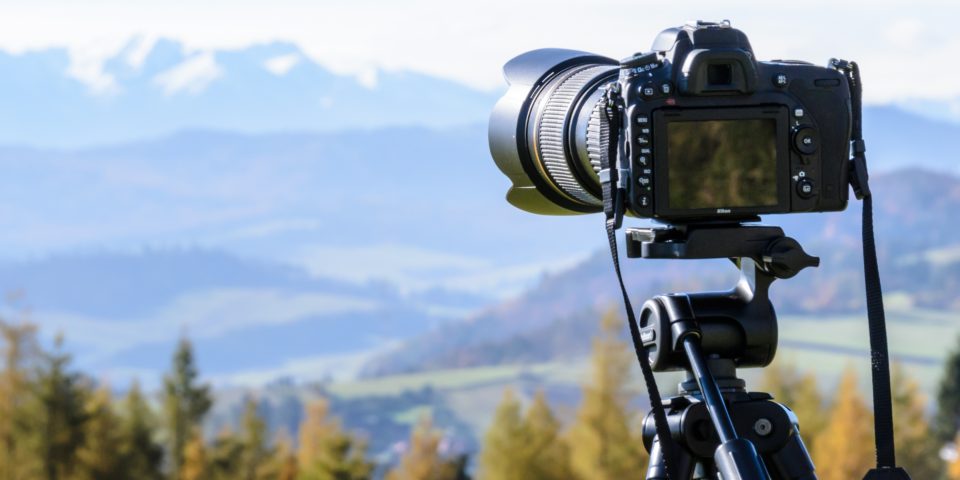Vlogs are very popular, but it’s difficult to watch a video when trying to do other things and still be engaged with valuable content. A podcast is a great way to reach people who cannot spend all their time glued to the screen of their computer or smartphone. I’ve been a podcaster for a long time, and it is a very effective method to get your message across. Let’s build a couple of set-ups to record and edit your own podcast.

Figure 1: A podcast starts with an audio recording and a message to share.
What is a Podcast?
The naming allegedly comes from the original iPod because it was a place where you could download audio and play it back wherever you were. A podcast can be on any topic and fit into any of the myriads of podcast categories. Many podcasts already exist, but the better ones will always stand out, and different listeners are looking for different things. However, you may struggle at first to get listeners to find your podcast. If that’s the case, it might be worth reading this epic blog post about growing a podcast audience, for example. That way, you might be able to pick up a few tips to ensure your hard work is paying off and listeners are enjoying your podcasts.
The Steps to a Podcast
Your podcast starts with you and a subject that you have enthusiasm and passion for. A podcast is something that recurs, in some episodic fashion because you gain listeners through increased exposure and more content.
Start with a script, jot down notes or points listing the things that you will cover. Your podcast is like a story, it has a beginning, a middle and an end. The beginning introduces who you are, the topic, and a welcome to listeners. The middle is your content. A podcast can be of any length, but if you can hold it under 30 minutes you will get more pickup. Your end is your wrap-up, including thanks to those who listened, and an invitation to listen again soon. There is a school of thought that two voices are more engaging, so maybe you have a friend that you can record with.
You record your podcast into your device, which could be a computer, a tablet, or a smartphone. To record a good sounding podcast, you will need a microphone, a recording application, and editor, and some headphones to monitor and edit your work.
Once your podcast is recorded, you use an audio editor to clean up the excess noise; the ums and ahs and any ancillary interruptions like dogs barking or phones ringing. This type of editing is very easy to get started with. If you find this part to be difficult to do or you are not sure where to start when it comes to getting rid of unwanted noise, it may be useful to get in touch with a Podcast Audio Editing and Mixing company. As this is what they specialize in, this could be one less task for you to do. When all this is done, your finished podcast is now ready for distribution. You may have a web service that does this, or you can get a free account on a feed management site to push your podcast to iTunes and other hosting services.
The last and continuing step is to get the word out that you have a podcast when a new episode releases and to increase the listening audience. Some podcasts have very small but very dedicated audiences, such as those dedicated to a particular TV show, or to a particular hobby. More general podcasts can attract a wider demographic. How you build and target your podcast is up to you.
A Simple Set-Up
I’m going to make the assumption that you have access to a computer that has a USB port. The machine can be running either macOS or Windows. There are apps for both, designed for recording podcasts. Use the USB port to connect your microphone. The built-in microphone in your computer is not horribly awful, but it isn’t good either, and good audio matters in a podcast.
There are many USB powered microphones on the market. In order to maximize the audio quality while keeping the costs down, I would recommend the Blue Yeti as a great microphone that will last for years. I still have mine and still use it when I am recording on the road. They sell for around $180 and the quality of the microphone capsule is incredibly good. If you haven’t heard much about the Blue Yeti, then you could check out this blue yeti review before you buy one.
If you are willing to spend about $400 you can get the professional level RØDE Podcaster microphone and suspension frame with pop shield.

Figure 3: RØDE Podcaster dynamic microphone
If your computer is a Macintosh, you already have an application called GarageBand installed, and GarageBand has a ready to go podcast template set up. It’s frighteningly easy to use, and there are plenty of good tutorials on YouTube if you need some help.
If your computer runs Windows, the application Audacity is superb. The user interface looks a bit old, but the quality of the application is excellent.
Use the same recording application as your editor. Again, there are lots of tutorials on how to do simple audio edits to make your podcast sound its best and both applications include popular digital effects, such as compressors, expanders, noise reduction and levelers to make your audio even better.
While you are recommended to record in a lossless format such as AIFF or WAV, your exported file should be in the popular and space efficient MP3 format. For spoken word podcasts, you do not need to export at more than 64KB/s. This keeps the sound quality very good but the file size small. A small file size is particularly important if you will be streaming your podcast rather than offering it as a download.
Once you have your podcast finished, you will use a syndication tool to push your podcast out to services such as iTunes and Stitcher. Libsyn is the best-known tool and while the user interface is not completely simple, it is a superb service. An alternative to Libsyn is FeedBurner. The UI is simpler, but the service may not have as much reach. You definitely want to get your podcast on iTunes at the minimum, with Stitcher as your second source.

Figure 4: Apple Logic Pro X with raw audio files imported
What About More People?
Multi-speaker podcasts are popular and while you can use a single microphone like the Yeti in omnidirectional mode on a table, you are better served by each speaker having his or her own microphone. As your computer does not have a built-in mixer to handle this, you will need some form of external interface that collects all your sources and feeds them into the computer, as uniquely editable digital tracks.
While the basic software can mostly handle this, you are talking about a more sophisticated recording set-up that is going to need more editing. At this point, Adobe Audition, which is available for both Windows and Mac is a great choice. If you have a Mac, Apple Logic Pro X is a strong player at a very reasonable cost. Both handle multiple tracks with independent track effects and editing with ease.
If this is your route, you are going to be better served by a low impedance microphone, with one per speaker. The Blue Yeti Pro is a perfect choice because it does both USB and XLR out.
From a mixer perspective, great and very cost-effective solutions are the Zoom recorders. A Zoom H6 can deliver up to six XLR inputs with easy-to-use metering and record either to a local SD card or directly to your computer. A Zoom H6 is also a superb field recorder. The TASCAM DR-70D offers 4 inputs and has excellent preamps.
If you need more inputs or want a mixing desk feel to your work, consider the Zoom F8 or Zoom R24. I have an R24 right beside me as I type this, and for studio and even field recording it is quite suitable.

Figure 6: Zoom F8 professional field recorder
Remote Guests
Sometimes you need to be able to record audio from people who are not in the same place. Skype, FaceTime and Google Talk are good for this, and software such as Audio Hijack Pro does an incredible job of collecting all those streams and outputting them as editable tracks. It’s what I use when doing podcast interviews. Sadly, it is only on the Macintosh. If you are on Windows you can check out Total Recorder.
Just Do It
A podcast is more than just a recording, but all podcasts start with recording great audio. I hope that this article provides enough information for you to consider building your own podcast and content delivery system. Knowing how to properly deliver your content around the world is a vital part of your podcast’s infrastructure, which is why it is vital to have a sophisticated content delivery network. You can have a look at some details on cdn performance to familiarise yourself with how they work.
If you have questions about this or any other subject, please leave a comment below.
Until next time, peace.








